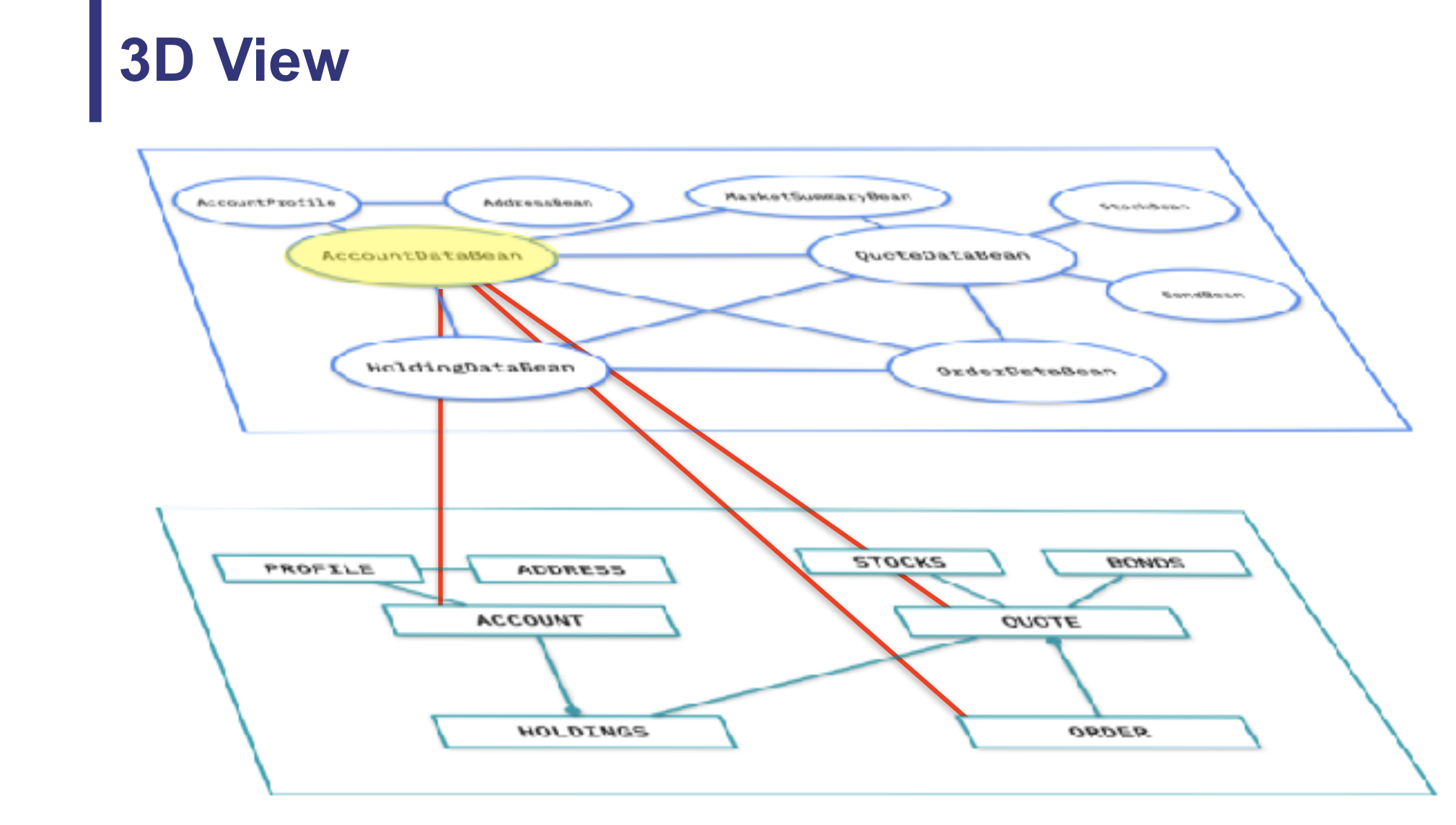Tackle Data Gravity Insights
Tackle Data Gravity Insights is a new way to gain insights into your monolithic application code so that you can better refactor it into domain driven microservices. It takes a wholistic approach to application modernization and refactoring by triangulating between code, and, data, and transactional boundaries.
Application modernization is a complex topic with refactoring being the most complicated undertaking. Current tools only look at the application source code or only at the runtime traces when refactoring. This, however, yields a myopic view that doesn’t take into account data relationships and transactional scopes. This project hopes to join the three views of application, data, and transactions into a 3D view of the all of the application relationships so that you can easily discover application domains of interest and refactor them into microservices. Accordingly, DGI consists of three key components:
1. Call-/Control-/Data-dependency Analysis (code2graph): This is a source code analysis component that extracts various static code interaction features pertaining to object/dataflow dependencies and their respective lifecycle information. It presents this information in a graphical format with Classes as nodes and their dataflow, call-return, and heap-dependency interactions edges.
2. Schema: This component of DGI infers the schema of the underlying databases used in the application. It presents this information in a graphical format with database tables and columns as nodes and their relationships (e.g., foreign key, etc.) as edges.
3. Transactions to graph (tx2graph): This component of DGI leverages Tackle-DiVA to perform a data-centric application analysis. It imports a set of target application source files (*.java/xml) and provides following analysis result files. It presents this information in a graphical format with database tables and classes as nodes and their transactional relationships as edges.

